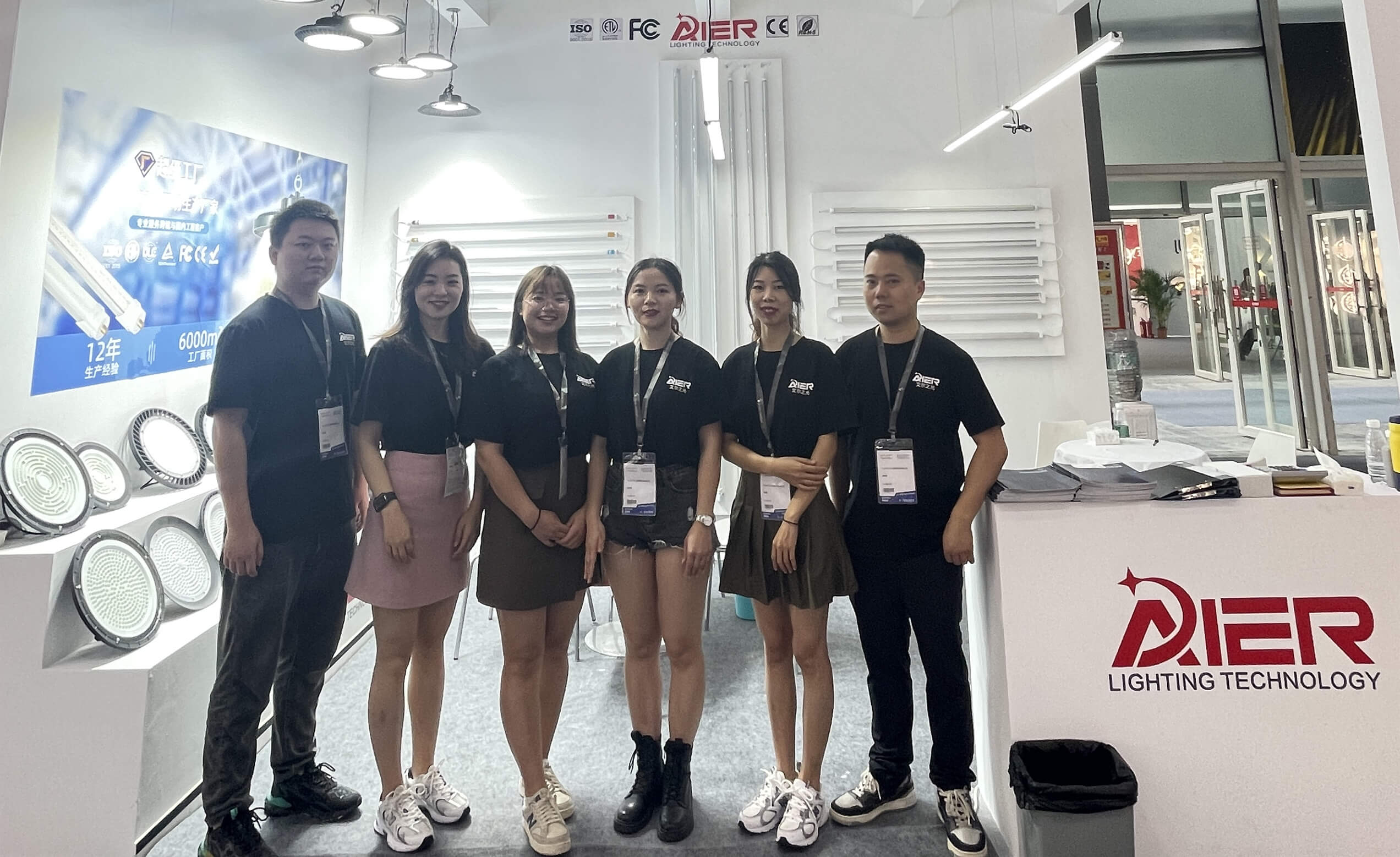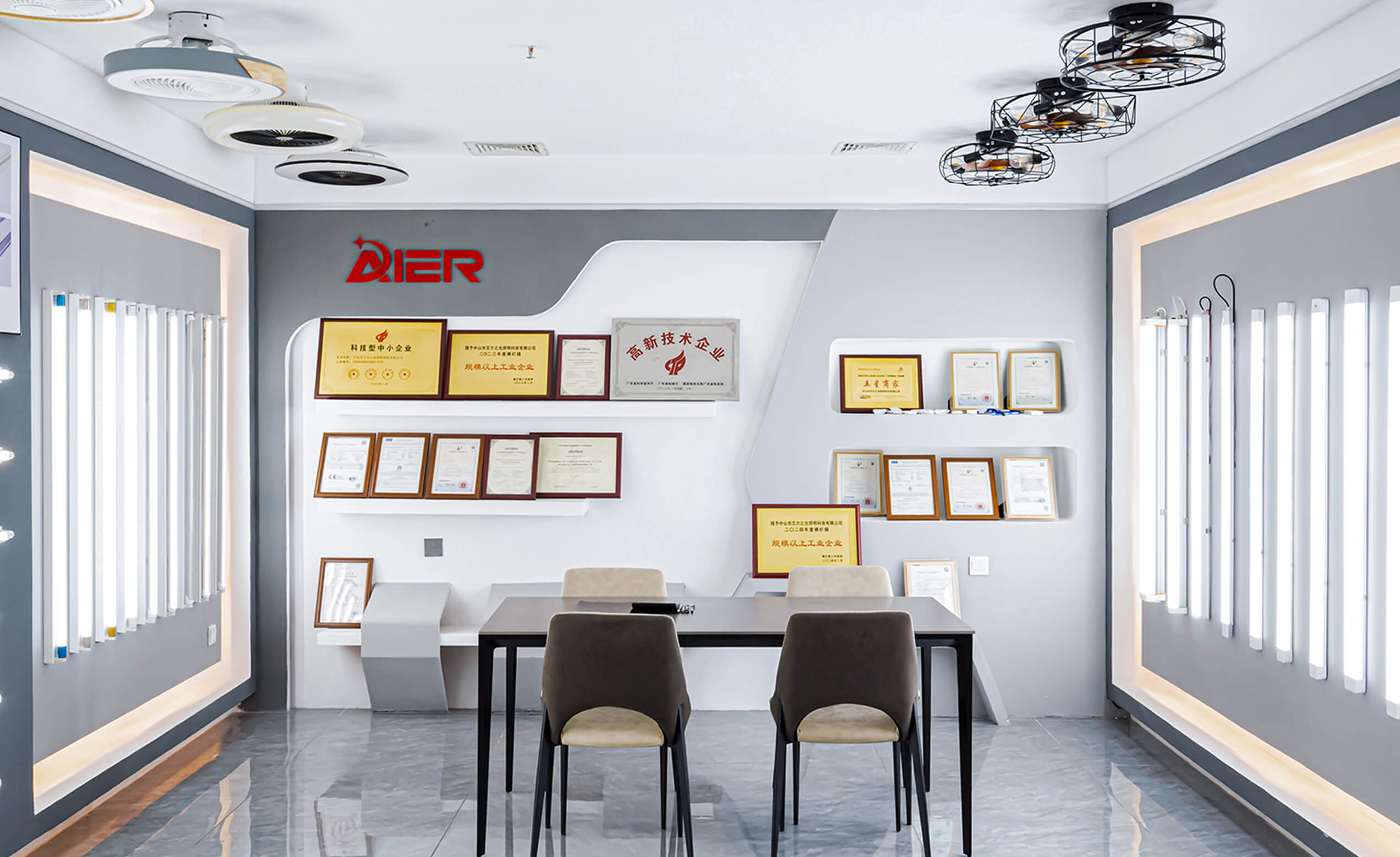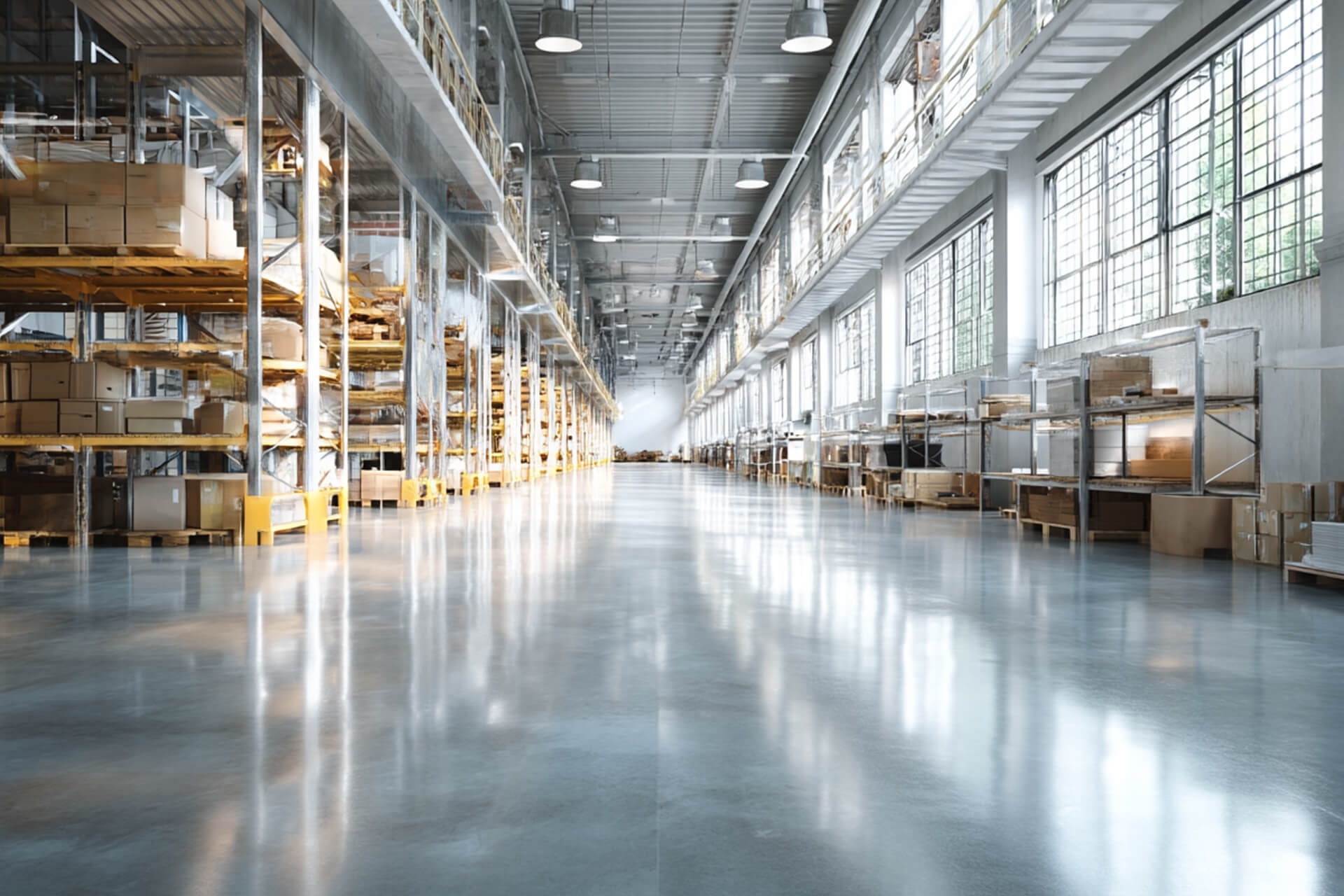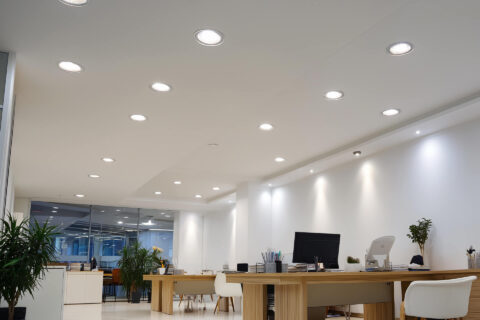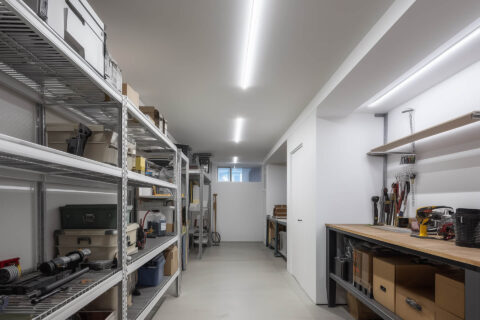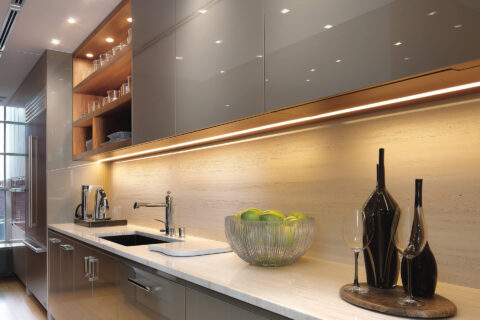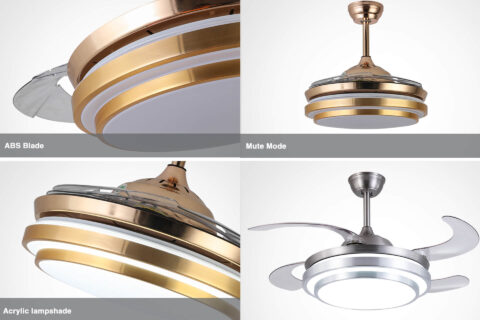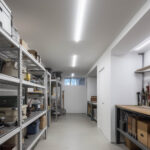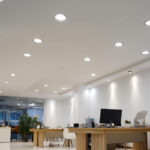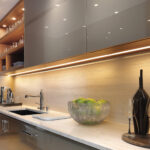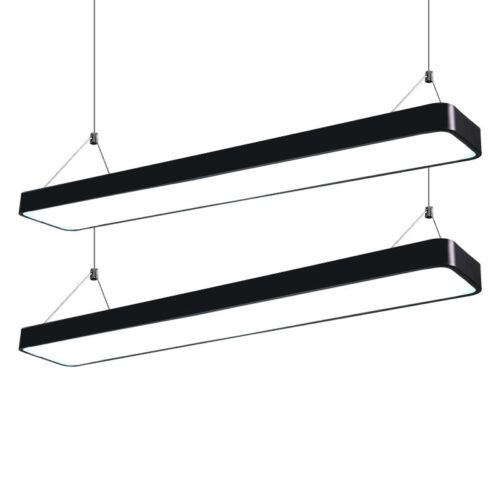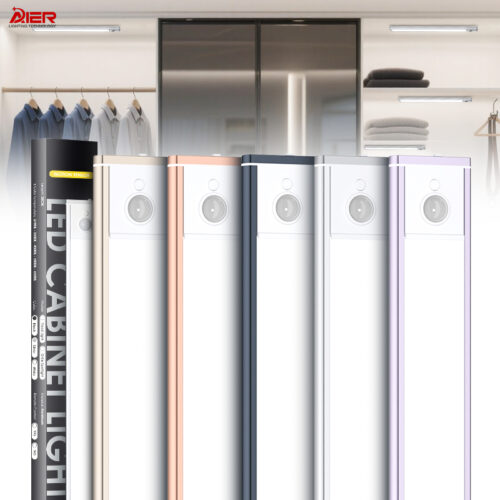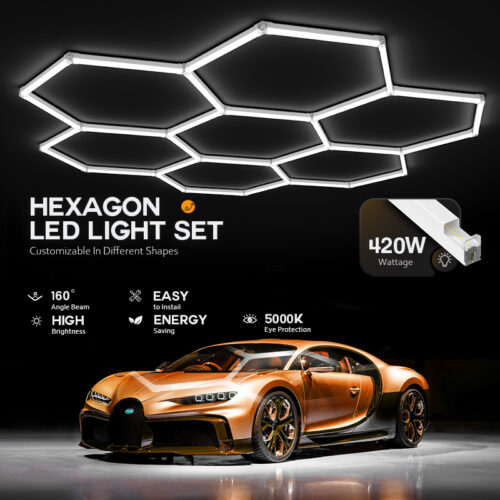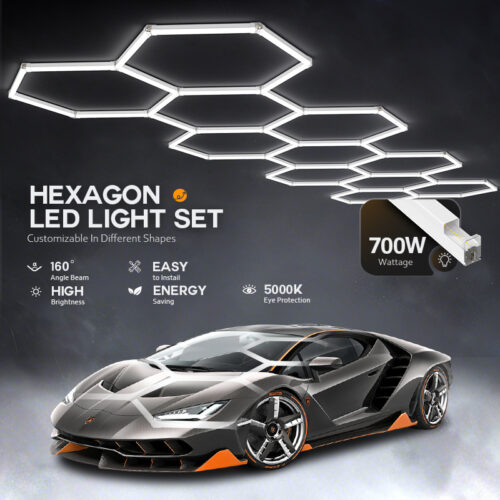In industrial and commercial settings, effective lighting is crucial for safety, productivity, and energy efficiency. High bay lights are specifically designed to illuminate large spaces with high ceilings, such as warehouses, factories, and gymnasiums. Their design ensures uniform light distribution, reducing shadows and enhancing visibility in expansive areas.
- What Are High Bay Lights?
High bay lights are lighting fixtures intended for use in spaces with ceilings typically ranging from 20 to 45 feet high. They are engineered to provide bright, uniform illumination over large areas, making them ideal for industrial and commercial applications. These lights are available in various designs, including linear and round (often referred to as “UFO” lights), to suit different spatial requirements. - Advantages of High Bay Lights
2.1 Energy Efficiency
Modern high bay lights, especially LED variants, are known for their energy efficiency. They consume significantly less power compared to traditional lighting solutions like metal halide or fluorescent lights, leading to substantial energy savings .
Revolve LED
2.2 Longevity
High bay LED lights have an impressive lifespan, often exceeding 50,000 hours. This longevity reduces the frequency of replacements and maintenance costs, making them a cost-effective lighting solution .
2.3 Improved Lighting Quality
These lights offer superior color rendering and brightness, enhancing visibility and safety in work environments. The consistent and clear illumination helps in reducing eye strain and improving overall productivity .
PacLights
- Types of High Bay Lights
3.1 Linear High Bay Lights
Linear high bay lights are rectangular fixtures suitable for lighting large, open areas. They are commonly used in warehouses and manufacturing facilities where aisle lighting is essential .
3.2 UFO High Bay Lights
Named for their circular, disc-like shape, UFO high bay lights are compact and provide a wide beam angle. They are ideal for spaces requiring focused lighting, such as gymnasiums and retail stores .
- Applications of High Bay Lights
High bay lights are versatile and can be utilized in various settings, including:
Warehouses: Ensuring safe and efficient operations by providing bright, uniform lighting.
Manufacturing Plants: Enhancing visibility for detailed tasks and machinery operation.
Gymnasiums: Offering adequate illumination for sports and events.
Retail Stores: Creating an inviting atmosphere and highlighting products effectively.
- Considerations for Choosing High Bay Lights
When selecting high bay lights, consider the following factors:
Ceiling Height: Ensure the light’s intensity and beam angle are appropriate for the ceiling height.
Lumens Output: Determine the required brightness based on the space’s size and purpose.
Color Temperature: Choose a color temperature that suits the environment—cool white for task-oriented areas or warm white for relaxation spaces.
Dimming Capabilities: Opt for lights with dimming features to adjust brightness as needed, enhancing energy savings .
- Installation and Maintenance
Proper installation of high bay lights is essential for optimal performance. It’s recommended to engage professional electricians for installation, ensuring compliance with safety standards. Regular maintenance, such as cleaning lenses and checking for any damage, will prolong the fixtures’ lifespan and maintain lighting quality. - Environmental Impact
Switching to LED high bay lights contributes to environmental sustainability. Their lower energy consumption reduces greenhouse gas emissions, and their longer lifespan means fewer replacements and less waste .
ELEDLights
Frequently Asked Questions (FAQ)
Q1: What is the difference between high bay and low bay lights?
A1: High bay lights are designed for ceilings 20 feet or higher, providing powerful illumination for large spaces. Low bay lights are intended for ceilings below 20 feet and offer lighting suitable for smaller areas.
Q2: Can high bay lights be used in outdoor settings?
A2: While high bay lights are primarily designed for indoor use, certain models with appropriate IP ratings can be used in covered outdoor areas.
Q3: Are high bay lights compatible with motion sensors?
A3: Yes, many high bay lights can be integrated with motion sensors, allowing for automated lighting control and additional energy savings.
Q4: How do I determine the number of high bay lights needed for my space?
A4: The number depends on factors like the area size, ceiling height, and desired brightness level. Consulting with a lighting professional can provide a tailored solution.
Q5: Do high bay lights require special maintenance?
A5: High bay lights are generally low-maintenance, especially LED versions. Regular cleaning and periodic inspections are recommended to ensure optimal performance.



